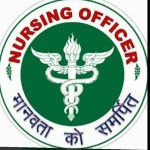Seizure (epilepsy)
Definition
Seizure, an episode of neural dysfunctions.
Convulsion or fits, it is a seizure with motor accompaniments,
Example, jerking or a limb/limb incontinence. Every seizure may not be convulsions.
Epilepsy
It is recurrent attack of loss of activity sensory phenomena and behaviour abnormalities. It is a paroxysmal disorder of nervous system.
Causes
• Unknown
• Hypoxemia
• Vascular insufficiency
• Fever
• Head injury/ head trauma (convulsion, brain contusion)
• Meningitis, encephalitis, hemorrhage)
• Hyperglycemia
• Hypoglycemia
• Toxemia in pregnancy
• CVA (thrombosis, embolism, hemorrhage)
• Hypertension
• Infection of CNS
• Metabolic change
• Brain tumour
• Drug withdrawal
• Allergy
• Degenerative brain disorder etc.
Classification of seizures
1. Generalized seizure
(a). Tonic clonic seizure (grand mal)
(b). Absence (petit mal)
(c). Minor, motor seizures (akinetic, myoclonic, atonic)
2. Partial (focal)
(a). Simple partial
(b). Complex partial
3. Status epileptics
It is a state in which a client has continuous seizures or seizures lasting at least 30 minutes. It is a medical emergency.
(a). Tonic clonic (grand mal)
It is a common type of epilepsy. A grand mal fit may pass through three stages are
1. Aura (onset of fits)
This is an initial warning stage before the fit.
Symptoms are
• Visual disturbance
• Hallucination
• Abnormal sensation of smell, taste, nausea
• Epigastric discomfort
• Psychogenic changes
2. Tonic, 30 sec. Duration
Symptoms are
• Tonic contraction of muscles
• Flexion of arms
• Extension of legs
• A cry sound due to spasm of respiratory muscles
• Loss of consciousness
3. Clonic, duration (1-5 minute)
It is immediately followed by a clonic phase during which there is a violent jerking of face and limbs biting of tongue, incontinence of urine and faeces.
4. Postictal phase, unconsciousness (coma)
It lasts for few minutes to several hours.
There may be headache, confusion, sleepiness, automatic behaviour.
(b). Petit mal seizures (absence fits)
It is typically seen in children during an absence attack.
Symptoms are
• Child stops working
• Looks confused
• May blink or roll up the eyeball
• Not responds to verbal commands
Clinical manifestation
• Impaired consciousness
• Excess or loss of muscles tone or movement
• Disturbance of behaviour, mood sensation and perception
• Disturbance of autonomic functions of the body
• Cyanosis
• Fixed jaw
• Dilated and fixed pupils
• Body stiffness
• Incontinence of urine
Diagnostic evaluation
• History of seizures
• Electroencephalograph
• CT scan
• Neuropsychological tests for epilepsy
• MRI
Medical management (pharmacological therapy)
Anticonvulsants or antiepileptic
Example
• Phenytoin
• Carbamazepine
• Phenobarbitone
• Valporate
• Primidone
Trick to remember easily
3P CV
Surgical management
By destroying minute areas of the brain.
Nursing management
Nursing care before seizures
• To maintain airway
• To observe seizure
• To prevent injury
• To administer drug
Nursing care after seizures
• To assist behavioural and conditions of patient after seizure.
• Instruct to patient that treatment of seizure will be long duration.
• To give instruction to family member's of patient about care giving during seizure.
• Drugs should not be discontinue without permission of doctor.
• Do not drive alone, avoid swimming, horse riding.
• Patient should sit on floor when he/she feels aura signs.
Nursing Diagnosis
1. Risk for injury related to seizures and cerebral edema.
2. Hyperthermia related to infectious process.
3. Ineffective tissue perfusion related to disease condition.
4. Disturbed thought process related to personality changes.



You must be logged in to post a comment.